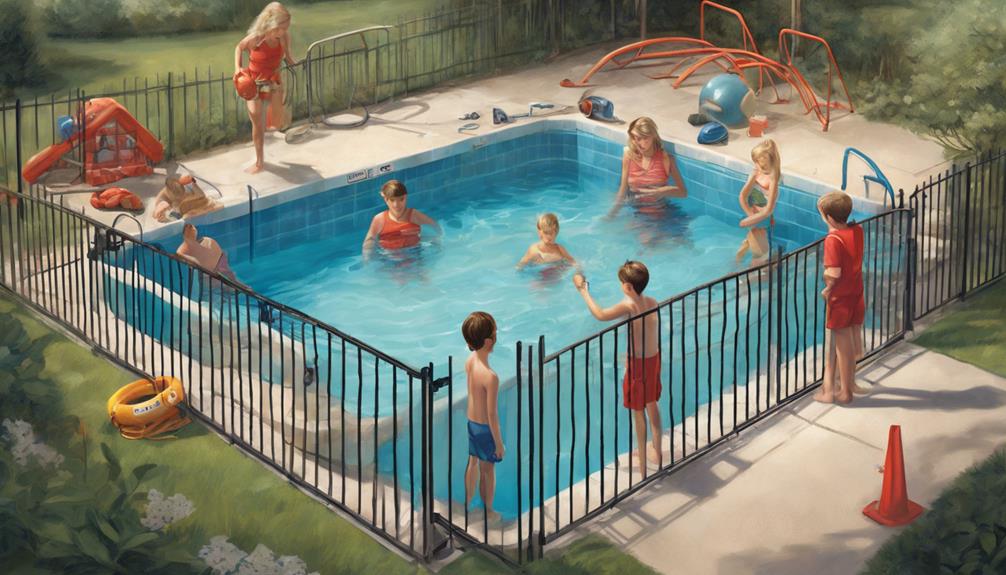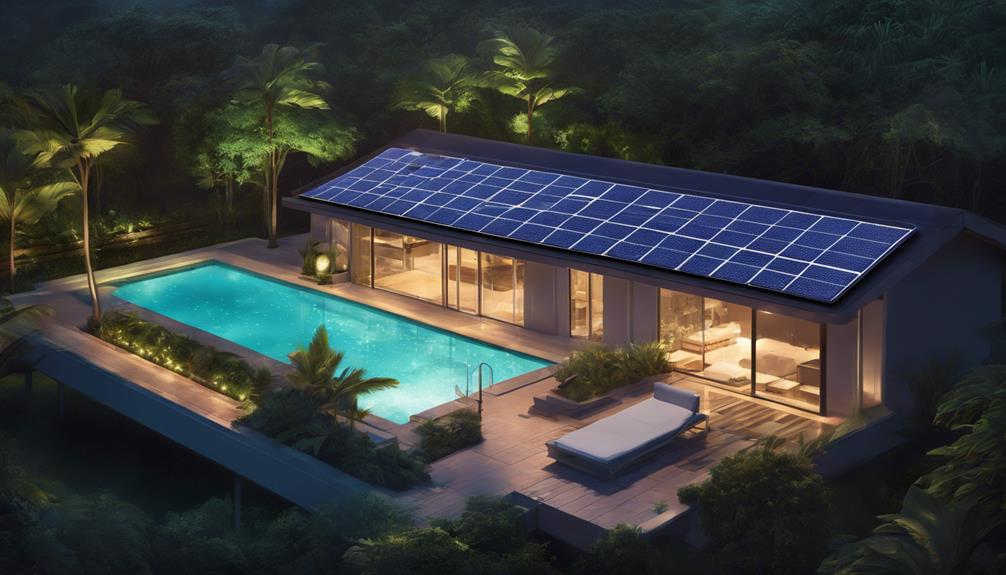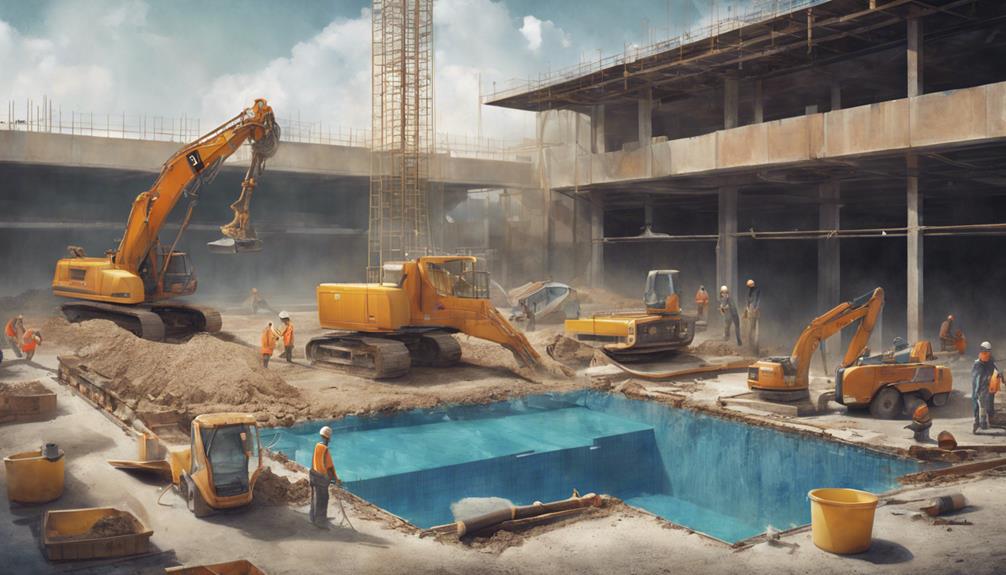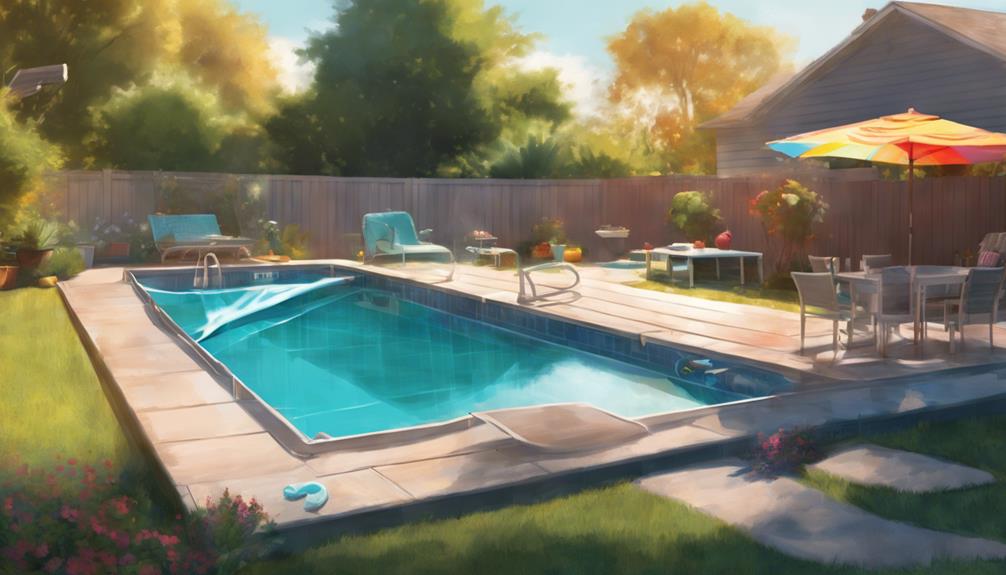To ensure children’s safety around pools, it is important to consider enrolling them in swim lessons from a young age to acquire water safety skills and create positive associations. Life vests are essential for pool safety, particularly when children are being supervised. It is important to establish strict pool safety rules, such as no rough play and avoiding pools during adverse weather conditions. Installing a 4-5 feet high fence around the pool with self-closing gates is also recommended. Additionally, maintaining proper pool hygiene practices can help prevent recreational water illness. These essential safety tips are vital for ensuring children’s safety in and around pools.
Key Takeaways
- Enforce a strict life vest policy for child swimmers.
- Install a self-closing, locked pool fence.
- Educate about water safety rules and etiquette.
- Regularly sanitize and maintain pool water quality.
- Supervise children closely while near the pool.
Swim Lessons for Early Safety
Swim lessons for early safety play a crucial role in equipping children as young as 12 months with essential water safety skills and confidence in the pool environment. These lessons teach basic water safety, floating techniques, adjusting to currents, and proper breathing, laying a foundation for a lifetime of safe swimming.
Exposure to water at a young age can foster positive associations with swimming, making it an enjoyable and beneficial activity. Parents have options for swim lessons, including group classes at recreation centers or private instructors.
Importantly, for children under 12 months, a doctor's approval may be necessary before starting swim lessons to guarantee their readiness and safety in the water.
Life Vests for Pool Safety
When prioritizing pool safety, the utilization of appropriate life vests is important for novice swimmers. Life vests play a vital role in keeping swimmers' heads above water and preventing accidents, especially for those who are still learning to swim. Enforcing a life vest policy in the pool area is a proactive step towards ensuring safety. Remember that supervision remains necessary even when a child is wearing a life vest. Opt for life jackets over inflatable toys, as they provide better protection. Below is a table summarizing the importance of life vests for pool safety:
| Life Vests for Pool Safety |
|---|
| Keep swimmers safe |
| Enforce a life vest policy |
| Provide necessary protection |
Pool Safety Rules Implementation

Implementing pool safety rules is vital for maintaining a safe environment for swimmers of all ages. To guarantee a secure pool experience, create a pool safety board with clearly listed rules.
Before allowing young swimmers to enter the pool area, thoroughly explain these rules to them. It is important to prohibit rough play or running near the pool to prevent accidents. Additionally, it is advisable to avoid pool use during adverse weather to minimize risks.
Educate children about not stepping on the pool cover to prevent entrapment incidents. By enforcing these pool safety rules diligently, you can significantly decrease the likelihood of accidents and promote a safe swimming environment for everyone.
Pool Fence Installation Guidelines
To safeguard the safety of individuals around the pool area, proper installation of a pool fence is crucial. Pool fences should be 4-5 feet high to prevent easy access.
Gates should open away from the pool area and be self-closing to make sure they automatically latch after each use. It is important that gates do not have foot or handholds that could facilitate climbing.
Keeping the fence locked when the pool is not in use adds an extra layer of security. By following these guidelines, pool owners can help prevent unsupervised access to the pool area, reducing the risk of accidents and promoting a safer environment for everyone.
Preventing Recreational Water Illness
Given the potential health risks associated with contaminated water, preventing recreational water illness is vital for maintaining a safe and hygienic pool environment. Recreational water illness can be caused by various pathogens present in untreated or poorly maintained water, leading to symptoms such as diarrhea, eye, skin, and ear irritation.
To prevent such illnesses, it is necessary to enforce strict hygiene practices, such as not allowing sick individuals to enter the pool and advising swimmers to shower before swimming. Additionally, regular filtration, shock treatments, and proper sanitization of the pool water are essential steps in preventing the spread of waterborne illnesses.
Frequently Asked Questions
Can Children With Medical Conditions Participate in Swim Lessons?
Children with medical conditions may be able to participate in swim lessons, but it is essential to consult with their healthcare provider first. Their doctor can provide guidance on any necessary precautions or modifications for a safe swimming experience.
Is There a Specific Age When Children Can Start Wearing Life Vests?
Ironically, there isn't a specific age when children can start wearing life vests. While age may not be the determining factor, it is important to take into account a child's swimming ability and water confidence before introducing them to this essential safety gear.
How Often Should Pool Safety Rules Be Reviewed With Children?
Pool safety rules should be reviewed with children regularly, ideally at the start of each swimming season and reinforced throughout. This guarantees that children remain aware of the guidelines and helps maintain a safe pool environment.
Are There Any Regulations for Pool Fence Color or Material?
When considering pool fence regulations, there are no specific rules regarding color or material, but it's essential to make sure the fence is at least 4-5 feet high, self-closing, and lacking footholds. Compliance with local building codes is vital for safety.
Can Recreational Water Illness Be Transmitted Through Pool Toys?
Recreational water illness can be transmitted through pool toys if they are shared among individuals. Contaminated water clinging to the toys can spread illness. It's important to sanitize and clean pool toys regularly to prevent potential transmission of waterborne illnesses.
What are the Essential Pool Protection Tips for Child Safety?
When it comes to comprehensive backyard pool safety, it’s crucial to implement multiple layers of protection to keep children safe. Installing a fence with a self-closing, self-latching gate, using pool covers, teaching kids to swim, and having constant adult supervision are essential tips for child safety around the pool.
How Can Pool Landscaping Help Enhance Child Safety in the Pool Area?
Pool landscaping for safety can greatly enhance child safety in the pool area. By strategically placing plants, fencing, and other barriers, you can create a secure and visually appealing environment. Adding non-slip surfaces and shallow water areas can also help prevent accidents. Overall, thoughtful pool landscaping can significantly minimize risks for children.
How Can Wildlife Deterrent Strategies Help Enhance Child Safety in the Pool?
When it comes to enhancing child safety in the pool, implementing wildlife deterrent strategies for pools is crucial. By utilizing methods to deter wildlife from entering the pool area, parents can create a safer environment for their children to enjoy swimming and water activities without the risk of encountering potentially dangerous animals.
What Are the Essential Pool Protection Tips for Child Safety?
When it comes to pool safety for children, there are a few essential tips to keep in mind. First, always ensure that there is adult supervision when children are near the pool. It’s also crucial to have barriers in place, such as fences and alarms, to prevent unsupervised access to the pool. Additionally, teaching children to swim at a young age can significantly enhance pool safety for children.
Conclusion
To sum up, prioritizing child safety in and around pools is essential to prevent accidents and illnesses.
Did you know that drowning is the second leading cause of unintentional injury-related death in children aged 1-14 years old?
By implementing early swim lessons, using life vests, establishing pool safety rules, installing barriers, and preventing recreational water illnesses, parents and caregivers can create a secure environment that promotes a safe and enjoyable swimming experience for children.









